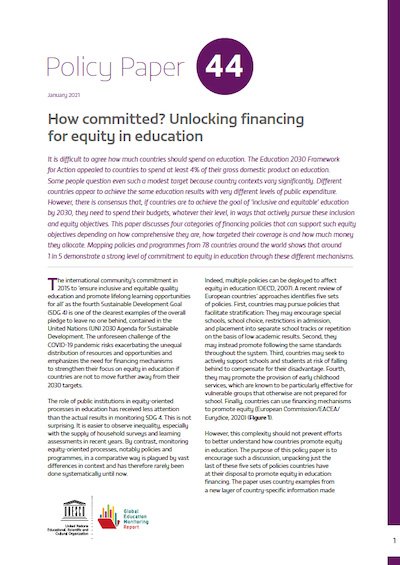How committed? Unlocking financing for equity in education

It is difficult to agree how much countries should spend on education. The Education 2030 Framework for Action appealed to countries to spend at least 4% of their gross domestic product on education. Some people question even such a modest target because country contexts vary significantly. Different countries appear to achieve the same education results with very different levels of public expenditure. However, there is consensus that, if countries are to achieve the goal of ‘inclusive and equitable’ education by 2030, they need to spend their budgets, whatever their level, in ways that actively pursue these inclusion and equity objectives. This paper discusses four categories of financing policies that can support such equity objectives depending on how comprehensive they are, how targeted their coverage is and how much money they allocate. Mapping policies and programmes from 78 countries around the world shows that around 1 in 5 demonstrate a strong level of commitment to equity in education through these different mechanisms.